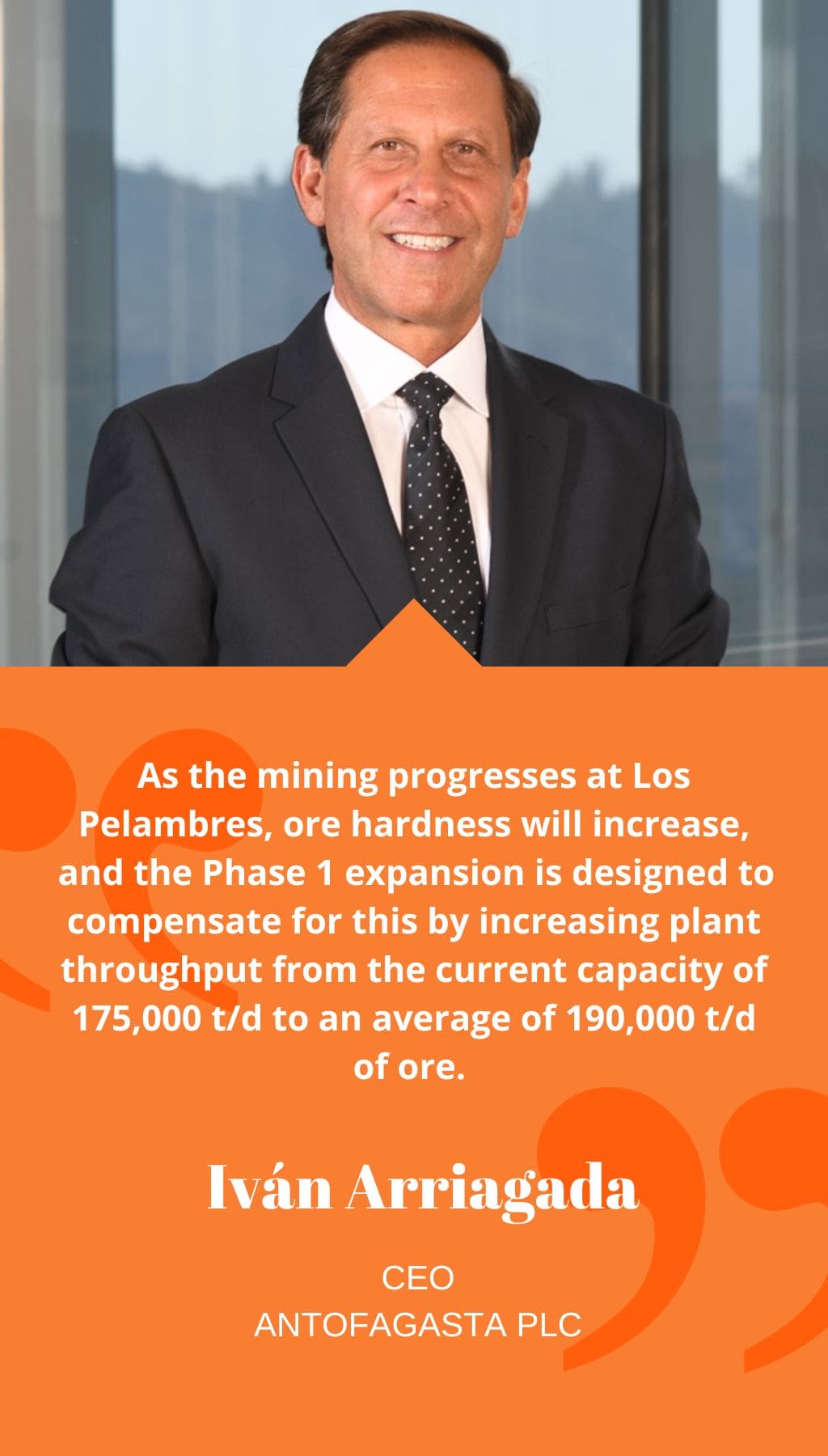
- Chile | 18 January 2022

What is the significance of the Phase 1 expansion of Los Pelambres, due to be completed in 2022, for the company?
As the mining progresses at Los Pelambres, ore hardness will increase, and the Phase 1 expansion is designed to compensate for this by increasing plant throughput from the current capacity of 175,000 t/d to an average of 190,000 t/d of ore. This expansion will be transformational for the company, as it will optimize throughput within the limits of the existing operating, environmental, and water extraction permits. Additionally, it will create up to 2,000 new jobs during construction, and annual copper production will increase by an average of 60,000 t/y over 15 years.
Can you elaborate on Antofagasta’s digital transformation roadmap?
Antofagasta is installing an integrated remote operations management center for Centinela in the city of Antofagasta, which will transform ways of working for colleagues by cutting travel time to and from the mine. This center will also encourage access into mining for more people, including women and the differently-abled. Furthermore, the company has developed a proprietary chloride leaching process for primary sulphides – Cuprochlor-T. This technology will allow them, over time, to produce copper cathodes from low-grade primary sulphide minerals at reduced operating and capital costs and with a smaller water and carbon footprint.
How does the company intend to utilize desalinated water through its INCO project?
Given the 12-year drought in central Chile, including in the Choapa Valley where Los Pelambres operation is located, Antofagasta decided to build a seawater desalination plant for Los Pelambres. The first stage of this project, with an output of 400 liters per second, is due to start operation in the second half of 2022, and the company plans to double its capacity as soon as the necessary permitting is obtained. Desalinated and reused or recycled water will then account for more than 90% of the mine’s total production, freeing up some 500 l/s of water for surrounding communities. These efforts will help Antofagasta progress towards their target for raw or desalinated seawater and reused or recycled water to supply 90% of the operational water use at all their mining operations by 2025.
Antofagasta intends to move to 100% renewable power. What steps must be taken to make this a reality?
Antofagasta has made a commitment to transition to renewable power, and by the end of 2022, all their electricity consumption will be renewably generated. Zaldívar became their first operation to use 100% renewable energy in July 2020, reducing their CO2 emissions by 67,614 tonnes at the time. In January 2022, Antucoya and Centinela also switched to 100% renewable electricity, and later this year, they will be followed by Los Pelambres. As part of this process, the company has been renegotiating their power purchase agreements (PPAs), switching them from conventional sources, principally coal, to renewables. They are also focusing more on energy efficiencies to reduce both greenhouse gas emissions and operating costs. Finally, Antofagasta joined the Chilean Hydrogen Association last year to explore the use of green hydrogen as a replacement fuel to diesel in mining truck fleets.














